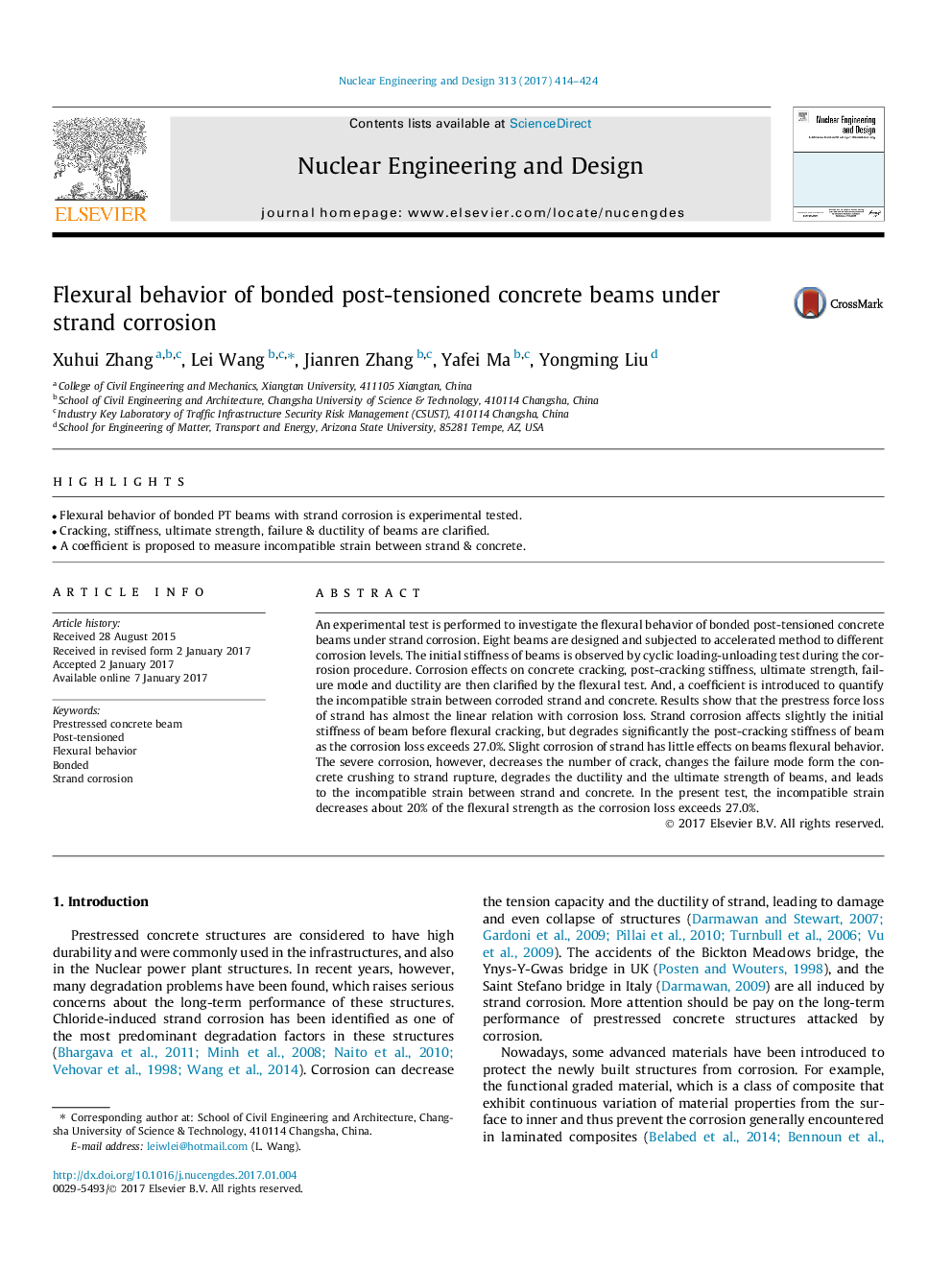| Article ID | Journal | Published Year | Pages | File Type |
|---|---|---|---|---|
| 4925532 | Nuclear Engineering and Design | 2017 | 11 Pages |
â¢Flexural behavior of bonded PT beams with strand corrosion is experimental tested.â¢Cracking, stiffness, ultimate strength, failure & ductility of beams are clarified.â¢A coefficient is proposed to measure incompatible strain between strand & concrete.
An experimental test is performed to investigate the flexural behavior of bonded post-tensioned concrete beams under strand corrosion. Eight beams are designed and subjected to accelerated method to different corrosion levels. The initial stiffness of beams is observed by cyclic loading-unloading test during the corrosion procedure. Corrosion effects on concrete cracking, post-cracking stiffness, ultimate strength, failure mode and ductility are then clarified by the flexural test. And, a coefficient is introduced to quantify the incompatible strain between corroded strand and concrete. Results show that the prestress force loss of strand has almost the linear relation with corrosion loss. Strand corrosion affects slightly the initial stiffness of beam before flexural cracking, but degrades significantly the post-cracking stiffness of beam as the corrosion loss exceeds 27.0%. Slight corrosion of strand has little effects on beams flexural behavior. The severe corrosion, however, decreases the number of crack, changes the failure mode form the concrete crushing to strand rupture, degrades the ductility and the ultimate strength of beams, and leads to the incompatible strain between strand and concrete. In the present test, the incompatible strain decreases about 20% of the flexural strength as the corrosion loss exceeds 27.0%.
